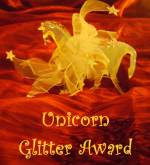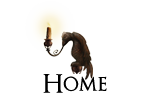A true hero has many incarnations. Edgar Rice Burroughs' original Tarzan book has spawned many reinventions, the latest of which is Andy Briggs' The New Adventures of Tarzan series. I missed out on the first of those when it was published last year - and 'missing out' is exactly what I mean. Tarzan: The Greystoke Legacy is a thrilling modern adventure - not only did it keep me on the edge of my seat, it also painted a graphic picture of the price that Africa pays for so-called civilised nations' greed. It's important that kids realise this early - and it's something that I feel passionately about. Andy clearly does too, and he shows it in a clever way which is an integral part of the story, not an off-putting lecture. His Tarzan is built like a Greek god - but has none of the manipulative ways of one. He is ruthlessly clear about right and wrong. In his world animals and their natural habitat must be preserved - and the humans destroying them must be stopped. If that means destroying them in their turn, then so be it. For all his uncompromising strength and power, though, this Tarzan has a touch of vulnerability and innocence about him which is peculiarly attractive.
Tarzan: The Jungle Warrior has just been published by Faber. A vile Russian big-game hunter steals something very precious from Tarzan's world, and naturally he has to get it back, even though it means going closer to the world of humans than he's ever been. It's just as edge-of-the-seat gripping as the first, and I very much liked that the characters of Jane and Robbie move on and develop in this book, as well as the friendship between Jane and Tarzan deepening. I'll certainly be recommending both books to every boy I know. They're tremendous, and I can't wait to see what happens next.
Anyway, to celebrate the birth of this second in his reimaginings of the Tarzan legend, and in keeping with Scribble City Central's reputation for discussing all things myth-related, I've asked Andy Briggs to talk about how he sees Tarzan's credentials as a modern mythic hero. Welcome, and over to you, Andy!
TARZAN - THE RISE OF A MYTH, THE BIRTH OF A HERO
AB: Africa; the cradle of civilization; the Dark Continent. A forge for myths and legends, and born in that violent merciless landscape: TARZAN. A boy raised by wild apes who became a noble lord... sound familiar? They’re the core ingredients for most iconic heroes. Romulus and Remus were twins born from a god and a princess, raised by wild wolves, who went on to found Rome. The rise of the underdog is a reoccurring theme in such stories, and one of Tarzan’s enduring traits.
Tarzan was lost in the jungle when his parents died and raised by an unknown species of intelligent ape. Now, let us hit the narrative pause button because in our enlightened times, we know this is nonsense. Or is it? Burroughs wrote about the apes, calling them the Mangani, back in 1912. That was only ten years before Captain Robert von Beringe shot a pair of overly large apes during an African expedition. The bodies were later confirmed as a new species of gorilla, prior to that the tales of ape men were regarded as stuff of legend. Just like Bigfoot or the Yeti now. Sometimes, the pages of myth and legend transform into those of non-fiction and reality, and Tarzan was at the vanguard of that.
Tarzan rapidly became a heroic icon. His actions fuelled the public’s imagination and his image was recognised globally, as were his exploits. How did the Ape Man manage to achieve this when his predecessor, Mowgli, from the pages of Rudyard Kipling’s The Jungle Book, didn’t? Kipling’s tale was, and still is, a superb adventure, but what Mowgli lacks is the dark beast within that makes Tarzan not only a very human character, but also the ultimate hero.
Edgar Rice Burroughs wrote about a character that had survived against the odds. As a young boy, Tarzan had many run-ins with the other apes who kept him in check and a near fatal encounter with the lion, Sabor. Always tenacious, Tarzan never allowed himself to be subdued. It wasn’t until he discovered the wonders of the rope and knife that was he able to counter his human frailty and dominate, not only Sabor, but the alpha male apes who controlled the Mangani apes. Through superior intelligence and lethal weapons, Tarzan became Lord of the Jungle. He grew into the perfect physical specimen, the epitome of man - and he achieved all of this in his teenage years. The image of Tarzan as a 30 something hero comes from Hollywood. Adding up the years in Burroughs’ original, Tarzan was about 19 - and Jane, well, she was of “marry age”, which put her anywhere between 16 and 18.
For me, this was the joy of Tarzan. One man against the world; one man who could conquer all odds. A warrior who sought to defend the weak and uphold the balance of the world - interestingly, Tarzan was one of the first iconic heroes who didn’t battle for good. He had no concept of right or wrong; only balance which highlighted “good” and “bad” as nothing more than human concepts. By the end of Burroughs’ first Tarzan book, Tarzan of the Apes, Tarzan had embraced civilization and was driving around Baltimore, saving Jane from forest fires. That is an image few people, aside from serious Tarzan fans, would imagine. Seeing him in his English manor house reading the newspaper, is Burroughs’ Tarzan. Only by the third book, when Tarzan properly returns to the jungle, does he become the Tarzan that is still caught in the bubble of public perception - the Tarzan of legend - and that’s the Tarzan I wanted to write about.
I brought Tarzan back to his roots. Raised by wild animals, he is a feral creature; untamed. A man who eats raw flesh and can laugh one minute, then destroy the next such is his black and white view of the world. He knows his friends and he respects his enemies. In Tarzan’s world there are no grey areas, making him a formidable character. We don’t want our heroes to be indecisive emotional wrecks - that is a trapping of our modern world. Our classic heroes are swift, judgmental and not mired down by red tape or moral indecision. My Tarzan is not the English gentleman, with the Ape Man’s heart; mine is a strong, ruthless warrior.
In my new book, Tarzan: The Jungle Warrior I really wanted to see how such a mighty hero would cope with the pressures of our modern world. He pursues the world’s great hunter through the jungle and out on onto the African savannahs, eventually ending up in the bustling city of Kampala. Like a true hero, I found Tarzan was able to adapt to the worst I could throw at him. If anything he became more elemental, a ferocious force of nature. Sometimes so much so that I had troubling controlling him.
As a writer of 10 other children’s books and numerous screenplays, I don’t self-edit. However, since Tarzan is a primal character he tends not to tie the bad guys up and wait for the police to arrive. He delivers his own form of bloody justice. For the first time I found that Tarzan was forcing me to self-edit, particularly when he is faced with a poacher and armed with a recently severed elephant tusk...
Like all forces of nature, Tarzan cannot be bound by pages, public opinion or even old age. A legend cannot be tethered, it can only live on. Here’s to another 100 years of the Ape Man.
TARZAN: THE JUNGLE WARRIOR is out now, published by Faber. Can't wait to read it? Why not click on Scribble City Central Bookshelf and buy both books in the series?



















3 comments:
Mowgli lacking a dark heart? - He destroys a village in revenge. I think what Mowgli lacked was a white skin and an aristocratic title. Kipling, being a greater artist than Burroughs, made Mowgli the child of poor Indian charcoal burners - and a brave, handsome, intelligent, resourceful, implacable one, who can outface village elders and British officials.
Good luck to Andy and his Tarzan - but Mowgli is the man for me!
Susan - I have to agree Kipling was a much more accomplished prose writer (and I do love the Jungle Book), but to be fair, as far as I remember, Mowgli sent the beasts into the village rather than do it himself... but I could be mistaken!!
Yes, just looked it up in my copy of the 2nd Jungle Book. Mowgli hatches a plan with Bagheera and Hathi the Elephant to take revenge on the villagers for their treatment of M's foster parents. First the pigs and deer ravage the crops, then the wolf brothers harry the livestock, finally the Elephants come in and finish the job. M is directing from the sidelines (unlike your Tarzan, Andy), and I couldn't find him joining in. However, his revenge on Shere Khan is quite graphic, I guess. I was brought up on Mowgli but had never thought to compare him to Tarzan. Interesting point, Susan. Thank you.
Post a Comment